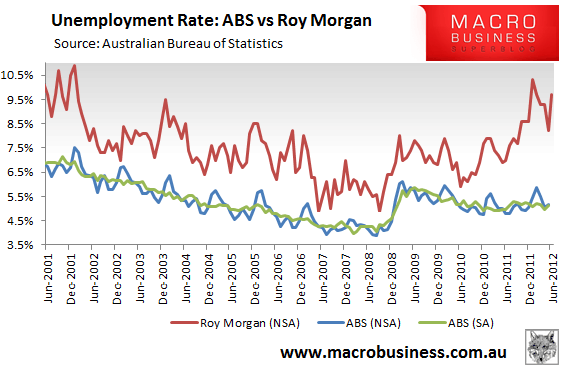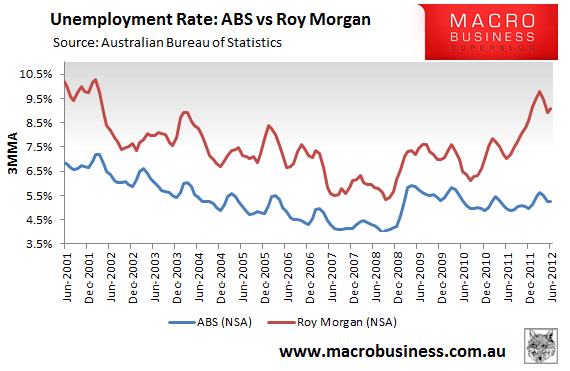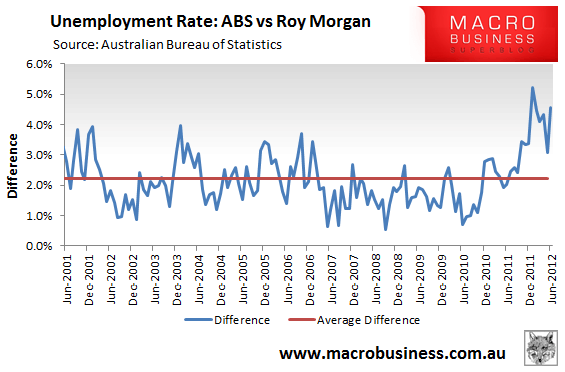
As reported by Houses & Holes, Roy Morgan Research yesterday recorded a big 1.5% jump in its unemployment rate to 9.7% in the month of June.
As explained previously, Roy Morgan measures employment differently from the Australian Bureau of Statistics (ABS), which is Australia’s official provider of labour force data:
According to the ABS definition, a person who has worked for one hour or more for payment or someone who has worked without pay in a family business, is considered employed regardless of whether they consider themselves employed or not.
The ABS definition also details that if a respondent is not actively looking for work (ie: applying for work, answering job advertisements, being registered with Centre-link or tendering for work), they are not considered to be unemployed.
The Roy Morgan survey, in contrast, defines any respondent who is not employed full or part-time and who is looking for paid employment as being unemployed…
Since Roy Morgan uses a broader definition of unemployment than the ABS, it necessarily reports a higher unemployment figure. In addition, Roy Morgan’s measure tends to be far more volatile, owing to the fact that it draws on a smaller sample than the ABS and is not seasonally adjusted.
The head of Roy Morgan Research, Gary Morgan, has previously been scathing of the official ABS measure of unemployment. For instance, after the ABS in January registered a surprise fall in Australia’s unemployment rate from 5.2% to 5.1%, Gary Morgan claimed that the ABS unemployment estimate “defy belief and common sense” and suggested that “the ABS figures are diverging from reality” in light of the “constant stream of companies announcing retrenchments in the early stages of 2012″.
Gary Morgan has also argued that the ABS measure is a lagging indicator as it “only classifies an unemployed person as part of the labour force if, when surveyed, they have been actively looking for work in the four weeks up to the end of the reference week“, whereas the Roy Morgan estimate “provides a more accurate picture of what is happening on the ground” since its “estimates are taken at that point in time“.
Irrespective of whether Gary Morgan’s criticism of the ABS is valid or not (I hold no strong views on the matter and tend to look at both measures independently), both series have, at least until the beginning of this year, tended to track each other reasonably closely (see below chart).

The strong correlation between the two measures is particularly noticeable when both series are measured on a 3-month moving average (3MMA) basis, which removes some of the inherent month-to-month volatility (see below chart).

The difference between the two series, which has averaged 2.2% over the past 11-years, is now at 4.6%, which is close to the all-time high divergence of 5.2% recorded in January 2012 (see below chart).

I noted previously that it remains to be seen whether Roy Morgan’s estimate is right or wrong with respect to the direction of the labour market. The previous divergence in January 2012 was bridged as the Roy Morgan unemployment rate retraced sharply in subsequent months (beyond usual seasonal movements). While this could happen again this time around, there is also the possibility that the official ABS figure will deteriorate towards Roy Morgan’s.
Wait and see…

